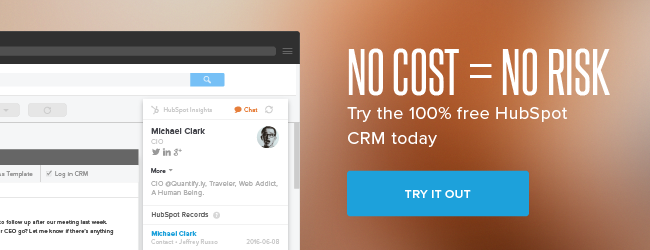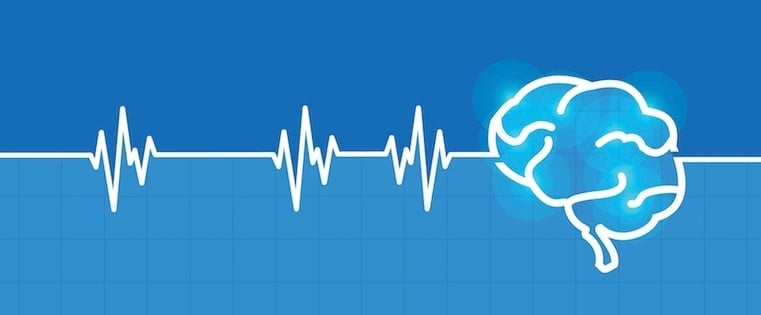The average person makes roughly 35,000 conscious decisions per day -- and the average rep probably makes even more. After all, sales roles require constant decision-making, from Which prospects do I call first? to Should I ask for this concession?

Ultimately, the better you are at making decisions, the better you’ll be at selling. Use these nine science-backed techniques to select the best choice possible.
How to Hack the Decision-Making Process
1) Don’t Think On an Empty Stomach
Research proves what we’ve long suspected: "Hanger" -- or the irritation you feel when you’re hungry -- is a real thing.
Scientists from Sahlgrenska Academy at the University of Gothenburg found that ghrelin, a hormone that’s released when you're hungry, makes you more impulsive. The higher your ghrelin levels, the less rationally you tend to act.
Wait to make your hardest decisions when you're not hungry and your ghrelin levels are lower.
2) Go Somewhere Dark
Making good choices is much tougher when you’re feeling emotional. Researchers from the University of Toronto Scarborough wanted to see if they could make people less emotional -- and consequently, improve their decision-making abilities -- by putting them in a dark room.
The experiment worked. When the study’s participants were under bright lights, both their positive and negative emotions were much more intense than when they were under dim lights.
If you don’t have your own office, reserve an empty conference room, then turn down the lights.
3) Pretend You’re an Outsider
It’s much easier to give advice than to take it. When you’re the one grappling with an issue, being objective is nearly impossible.
But there’s a way to get around your biases: Simply pretend your challenge is actually happening to someone else. According to a study published in Psychological Science, looking at a situation from a third party’s point-of-view helps you think more impartially than placing yourself front and center.
4) Take a Deep Breath
People have trouble cutting their losses. If you’ve already invested time and energy into a prospect, it’s challenging to walk away -- even though you know they’re not a good fit for your product.
However, there's a simple, science-backed wayto eliminate this “sunk-cost bias.” Spend 15 minutes focusing on your breathing. This meditative process focuses your brain on the present, so you’ll have less trouble throwing in the towel when something clearly isn’t working.
5) Come Up With Three Options
How many courses of action should you consider for each decision? Dr. Therese Houston, author of Teaching What You Don’t Know and decision-making expert, says the magic number is three.
“Once you start generating more alternatives, the quality of decisions goes way up,” she explains. “You’ve got more options on the table.”
Houston adds that “all too often, we only give ourselves one option, and we fool ourselves into thinking it’s actually two.”
For instance, “Should I offer the buyer a discount, or not?” sounds like two choices, but slashing the price is only one way to move the deal forward. Keep brainstorming until you’ve got two other ideas for coming to a compromise with your prospect. You could adjust payment terms instead, or throw in additional support at no cost.
6) Watch the Clock
As a rep, you know how difficult it is to get prospects to change their status quo. But you're also susceptible to this resistance to change -- and unsurprisingly, it hurts your ability to make good decisions.
Researchers from the University of Wuerzburg and the Max Planck Institute for Human Cognitive and Brain Sciences recently discovered a bizarre solution: Watch the clock.
Seeing the clockwise movement subconsciously reminds you of the future, which makes you more open to change and new ideas.
So if there isn’t an analog clock nearby, consider buying one before your next important decision, or bookmark this site for a handy browser version.
7) Trust Your Gut -- But Use Your Head
Some people use data to guide their decisions. Others act on their instincts. The most successful decision-makers, however, consider themselves both “strongly analytical” and “strongly intuitive.” Depending on the situation at hand, they switch off between each style
Imagine you’re hiring a sales rep. First, you’d look at all the candidates from an analytical standpoint. That includes hard metrics like how many years of experience each has, how often they met or exceeded their quota, and so on. Then, ask yourself who feels like they’d be the best hire.
Once you combine your analytical and intuitive answers, you’ll be much closer to the right choice.
8) There’s an App for That
Your heartbeat may hold the secret to making decisions. Julia Mossbridge, a cognitive neuroscientist and the CEO and research director of Mossbridge Institute, LLC, says that“physiology -- including heart rhythms -- is linked to both unconscious and conscious processes.”
With that in mind, Mossbridge created Choice Compass. This app (available for both iOS and Android) uses your smartphone’s camera to analyze your pulse while you deliberate between choices. After one minute, it’ll tell you which one produced more rhythmic heart patterns -- which usually indicates a choice you'll be happier with.
You probably shouldn’t rely solely on Choice Compass, but it can make a good tie-breaker when you’re stuck between two choices.
9) Sleep On It
Never make a big decision when you’re tired. A lack of sleep makes you overly optimistic, so your risk perception is completely skewed. Sleep deprivation also makes it much harder for you to take in and process new information.
Need proof of its danger? Sleep-deprived employees were responsible for both the Chernobyl disaster and the 1989 Exxon Valdez oil spill.
If you’re feeling fatigued and the matter isn’t urgent, wait until the next morning to make up your mind. And if you can’t delay the decision that long, take a power nap. Studies show even a little shut-eye reduces impulsivity and improves your focus.
Adopt these techniques to boost both the quality and speed of your decision-making process. Agonizing over decisions will become a thing of the past.

![The Psychology of Customer Perceived Value [Infographic]](https://www.hubspot.com/hubfs/380_Customer%20Perceived%20Value.png)




![7 Cognitive Biases Salespeople Must Know to Close Deals [Cheat Sheet]](http://53.fs1.hubspotusercontent-na1.net/hubfs/53/00-Blog_Thinkstock_Images/cognitive-biases-close-more-deals-cheatsheet-514637-edited.jpg)


![20 Weird Cognitive Biases Influencing Your Buyer's Decision [Infographic]](http://53.fs1.hubspotusercontent-na1.net/hubfs/53/biasstockphoto.jpg)
